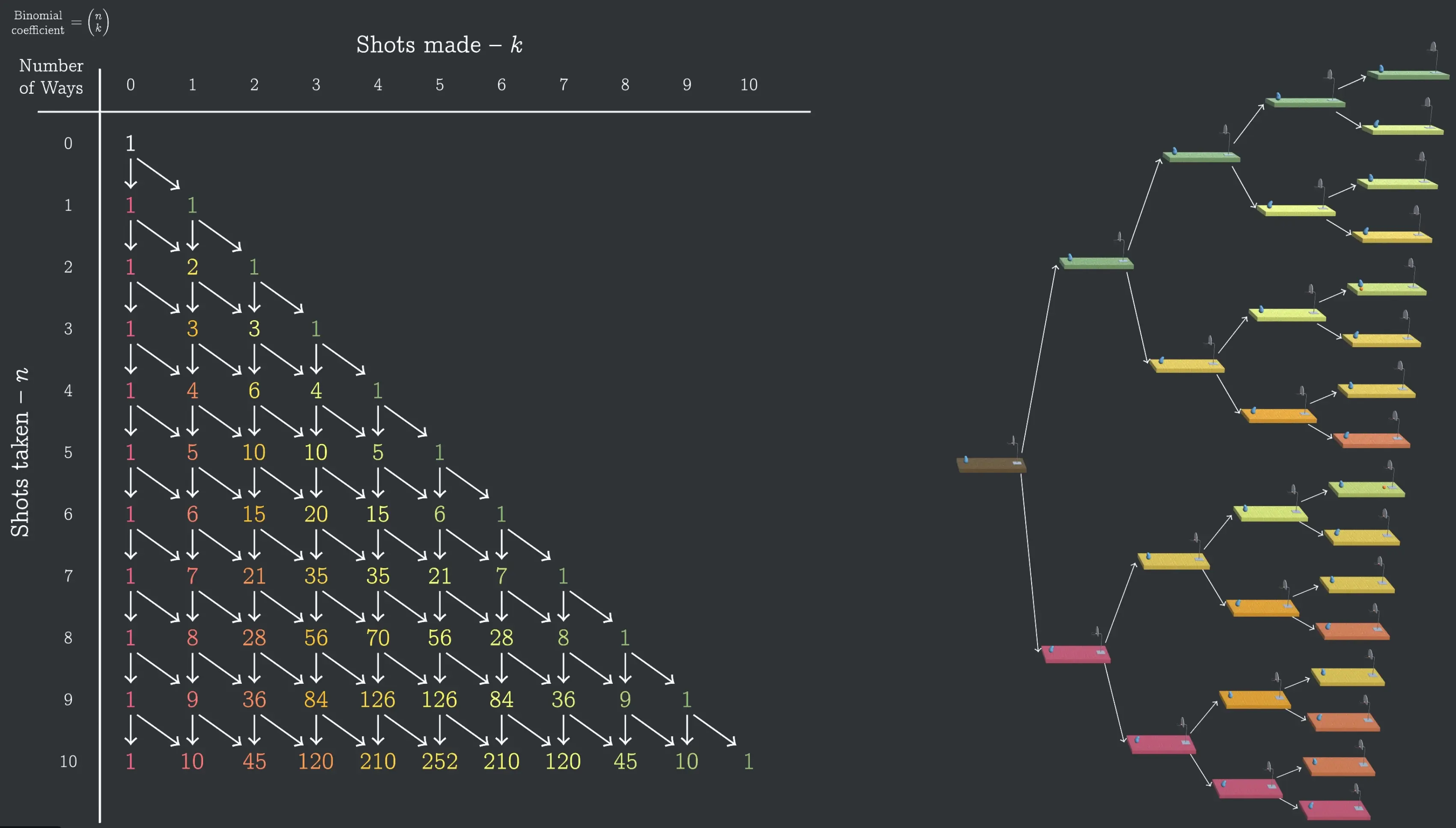Binomial Coefficient
The denominator accounts for the fact that we don't care about the order of selection.
The term removes overcounting from different arrangements of the chosen items, while does the same for the unchosen items, i.e. rearranging chosen or unchosen items doesn’t change the subset.
Fundamental Properties of Binomial Coefficients
since there’s exactly one way to choose no elements (empty set) or all elements.
due to symmetry - choosing items is equivalent to excluding items.
to choose from items, we can aka Pascal’s identity - also (nice visual on the wiki).
Link to originalThe sum of all binomial coefficients for fixed (row of Pascal’s triangle) equals
This makes intuitive sense when thinking about sets: counts the ways to choose items from items, and summing over all possible gives us the total number of possible subsets of an -element set, which is . Each element either is or isn’t in the subset, giving us two choices for each of the elements → power set.
Binomial Theorem
For any and :
This generalizes the distributive law for exponents. The coefficients appear in Pascal’s triangle, forming the coefficients in expansions of binomials like:
With negative terms, the factor creates alternating signs:
Link to originalThe numbers in Pascal's Triangle are precisely the binomial coefficients . In row (starting at row 0), position (starting at ), the number represents .
This connection arises naturally from the recursive definition of binomial coefficients: 1
Which is exactly how Pascal’s Triangle is constructed: Each number is the sum of the two numbers above it.
The recursive formula represents that to choose items from items, we can either:
- Take a specific item and choose more from the remaining items ()
- Leave out that specific item and choose all from the remaining items ()
aka Pascal’s identity.

Info